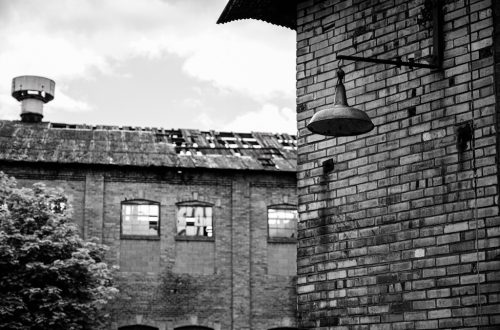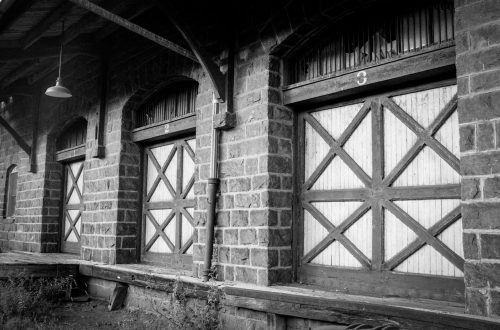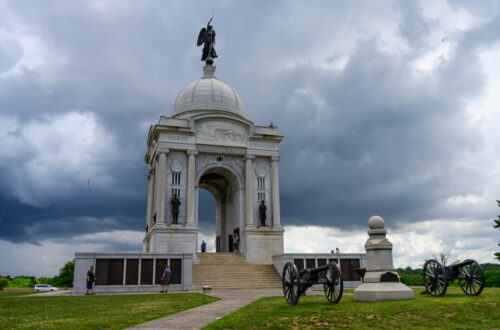When the Johnstown Flood Came to the Alle-Kiski Valley
 Here’s something that I learned this winter:
Here’s something that I learned this winter:
Shortly after the Johnstown Flood of 1889 (the flood that killed 2,209 people), tourists took picnic lunches to Johnstown, Pennsylvania so they could sight-see the damage. Residents of the river towns of the Allegheny-Kiskimenetas (Alle-Kiski) Valley didn’t have to make this trip, though. The Johnstown Flood came to them.
I lived in Johnstown for a few years after college. One of the highways which I regularly used follows the Little Conemaugh River, which was the path that the wall of water took into Johnstown during the 1889 flood, then passes under the infamous stone bridge that trapped many of the flood’s victims. Downtown buildings include plaques showing 1889’s high water mark and the downtown park features makers remembering the victims from Johnstown’s three deadliest floods (in 1889, 1936, and 1977).
Since I like Pennsylvania history and I actually lived in Johnstown, one would have thought that I read “The Johnstown Flood” by Pulitzer Prize-winning Pittsburgh native David McCullough years ago, right? Nope. I read it for the very first time this fall and winter.
Until I read this book, I never seriously thought about where the flood water went after it hit Johnstown.
Now I know the following about the Alle-Kiski Valley’s river system: The Little Conemaugh and Stoneycreek Rivers merge in downtown Johnstown (at Johnstown’s own “Point”) to form the Conemaugh River. The Conemaugh flows into the Kiski at Saltsburg. The Kiski flows into the Allegheny, then about ten miles later it flows past New Kensington, then past numerous other river towns such as Verona, and eventually it meets the Monongahela at Pittsburgh to form the Ohio. So this is where the water from the Johnstown Flood also flowed after hit destroyed Johnstown.
Here’s a passage from Chapter IX of McCullough’s “The Johnstown Flood,” about the aftermath of the flood:
The Allegheny River, with its endless freight of wreckage, also continued to be an immense fascination. Children were brought from miles away to watch the tawny water slip past the shores, so that one day they might be able to say they had seen something of the Johnstown Flood. The most disreputable-looking souvenirs, an old shoe, the side of a packing box with the lettering on it still visible, were fished out, dripping and slimy, to be carried proudly home.
There were accounts of the most unexpected finds, including live animals. But the best of them was the story of a blonde baby found at Verona, a tiny river town about ten miles up the Allegheny from Pittsburgh. According to the Pittsburgh Press, the baby was found floating along in its cradle, having traveled almost eighty miles from Johnstown without suffering even a bruise. Also, oddly enough, the baby was found by a John Fletcher who happened to own and operate a combination wax museum, candy stand, and gift shop at Verona.
Fletcher announced his amazing discovery and the fact that the baby had a small birthmark near its neck. Then he hired a pretty nineteen-year-old, dressed her in a gleaming white nurse’s uniform, and put her and the baby in the front window of his establishment. Within a few days several thousand people had trooped by to look at the Johnstown baby and, it is to be assumed, to make a few small purchases from the smiling Mr. Fletcher. Then, apparently, quite unexpectedly, the baby was no longer available for viewing. The mother, according to Fletcher, had lived through the flood and, having heard the story back in Johnstown, rushed to Verona, identified the birthmark, and went home with her baby.
I have one big thought on this:
1.) Some of the flood debris, and at least one survivor, from the Johnstown flood washed downstream, past New Kensington and other Allegheny River towns. At least one survivor made it as far as Verona. This would make an interesting detail in a historical novel about New Kensington in 1889.


